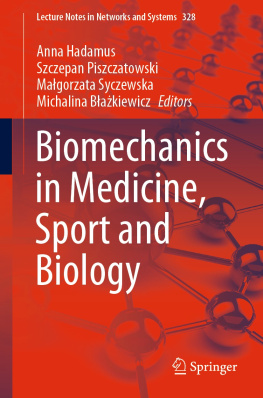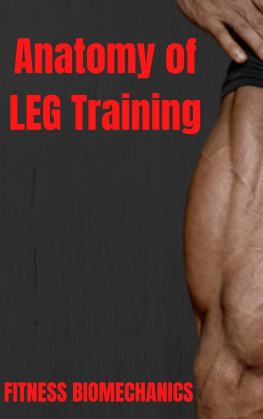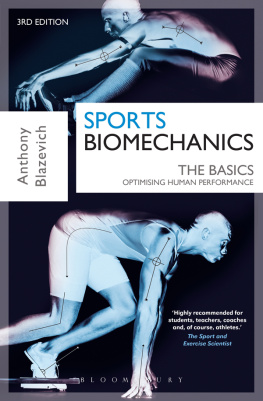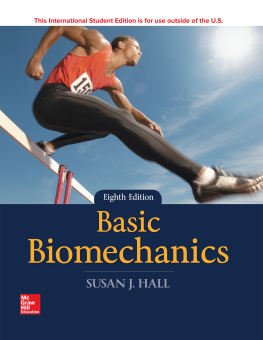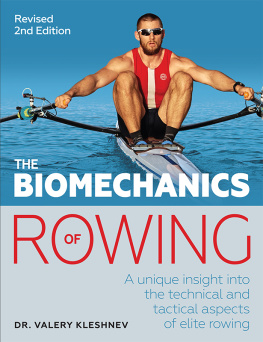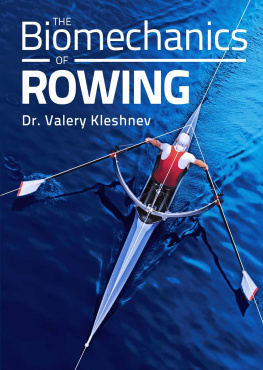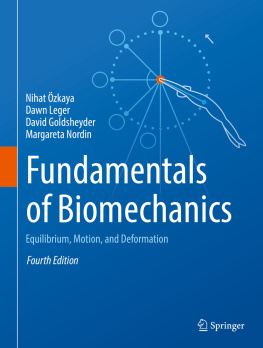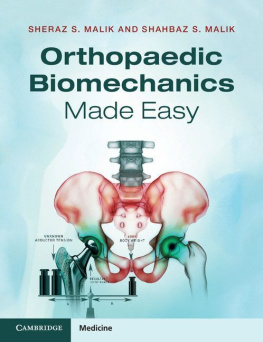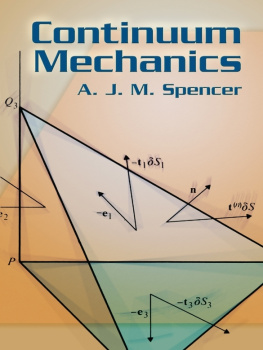1.1 Point of Departure
Biology is the study of living things; mechanics is the study of motions and the applied loads that cause them. Biomechanics can be defined, therefore, as the study of the motions experienced by living things in response to applied loads. Herein, however, we consider that biomechanics is the development, extension, and application of mechanics for the purposes of understanding better the influence of applied loads on the structure, properties, and function of living things and the structures with which they interact. Thus, the domain of biomechanics is very broad. It includes, among many other things, studying the effects of wind loads or gravity on the growth of plants, the mechanical properties of foodstuffs, the flight of birds, the drag-reducing properties of the skin of dolphins, and human athletic performance. Additionally, biomechanics addresses many issues of health as well as disease, injury, and their treatment in both humans and animals. This shall be our primary motivation herein; thus, it is easy to see that biomechanics is fundamental to the rapidly growing field of biomedical engineering.
It is not possible to identify a true father of biomechanics, but many point to either Leonardo da Vinci (14521519) or Galileo Galilei (15641642). Among many other things, da Vinci was interested in a means by which man could fly, and to this end, he studied the mechanics of the flight of birds. Mankinds attempt to base the design of engineering systems on natures way of doing something (e.g., the honeycomb structure within a beehive or a bats radar system) is called bionics, which remains a very important area within biomechanics. In contrast to da Vinci, Galileo was interested in the intrinsic strength of bones and, in particular, its relation to the structural design of bones. Based on a preliminary analysis , he suggested that bones are hollow, for this improves the strength-to-weight ratio. Clearly, then, biomechanics focuses on both design and analysis, each of which is fundamental to engineering.
Jumping forward to the late nineteenth century, Wilhelm Roux put forth the idea of a quantitative self-regulating mechanism that results in functional adaptation by tissues, organs, and organisms, an idea that was consistent with the concept of a stress-mediated organization of the microstructure of bone that was put forth by Julius Wolff in 1884. Briefly, Wolff suggested that the fine structure within bones (i.e., oriented trabeculae) is governed by lines of tension that result from the applied loads. Although his analysis was not correct, the basic idea was extremely important. For more on Wolffs law of bone remodeling, see Chap. ). Indeed, we will return many times to this observation that mechanical loads control tissue structure and function, which has given rise to the very important area of research called mechanobiology.
Many other savants were interested in biomechanical applications. They include R. Hooke (16351703), L. Euler (17071783), T. Young (17731829), J.L.M. Poiseuille (17991869), and H. von Helmholtz (18211894). Despite the caliber of scientists who have sought answers in biomechanics over the centuries, our field did not truly come into its own until the mid-1960s. Although historians will likely argue over the reasons for this, it is suggested here that five nearly concurrent developments provided both increased motivation and increased capabilities in biomechanics. Recall that the 1960s was the decade of mankinds pursuit of the Moon. When faced with the question, How will man respond to the altered loads associated with space travel, including a reduced gravitational load on the Moon?, clinical medicine could not provide the answers, for it is based largely on observations. There was a need, therefore, for a predictive science, one focusing on how the body responds to mechanical loads. In addition, note that much of biomechanics deals with the response of soft tissues (i.e., tissues other than bones and teeth). It has long been known that soft tissues exhibit complex nonlinear behaviors that could not be described by the classical mechanics of continua developed in the eighteenth and nineteenth centuries. Rather, biomechanics had to await the post-World War II renaissance in continuum mechanics (19481965) through which the nonlinear theories achieved a more complete and rational foundation. During this same period, 1950s1960s, technological developments gave rise to the digital computer. Computers are essential in biomechanics for solving many important but complex boundary and initial value problems, for controlling complicated experiments, and for performing nonlinear analyses of the data. Paralleling the development of computers was the advancing of powerful numerical methods of analysis, including the finite element method, which was introduced in 1956 and has become a standard tool in the biomechanicists arsenal for attacking basic and applied problems. Finally, it is not coincidental that biomechanics emerged at the time that modern biology was born, which was due in large part to the identification in the 1950s of the basic structure of proteins (by L. Pauling) and DNA (by J. Watson and F. Crick). In summary then, the 1950s and 1960s provided important new motivations as well as theoretical, experimental, and technological advances that allowed the emergence of biomechanics. This is, of course, only a synopsis of some of the essential historical developments. The interested reader is encouraged to investigate further the history of our field.
Although biomechanics encompasses a broad range of topics, the purposes of this book are twofold: first, to introduce fundamental concepts and results from solid and fluid mechanics that can be applied to many different problems of importance in biology and medicine and, second, to illustrate some of the many possible applications by focusing on the mechanics of human health, disease, and injury. Hence, to motivate our study further, let us briefly review some of the many cases wherein biomechanics can and must contribute to the advancement of health care. Once we have sufficient motivation, we shall then briefly review results from Cell and Matrix Biology, results on which we shall build in Chaps..
1.2 Health Care Applications
There are many obvious examples wherein biomechanics plays a central role in the delivery of health care, roles that literally span all levels from the molecule to the person. Beginning with the latter, a simple example of an important biomechanical contribution is the design of efficient wheel-chairs. By efficient, of course, we mean having sufficient strength with minimal weight, but also ease of maneuverability, ease of transport in a car or van, flexibility in the positioning of the patient, and even affordability. One does not realize the importance of what may seem to be such a simple device until a family member is incapacitated and in need. Selection of materials, design, experimentation, and stress analysis each play important roles in the engineering of an efficient wheelchair. Another common example at the level of the whole person is the design of transportation systems that improve occupant safety. Again, one only needs to see the devastation wrought on a family when someone is injured severely in a vehicular accident to appreciate the need for biomechanical solutions to improve safety in transportation.



